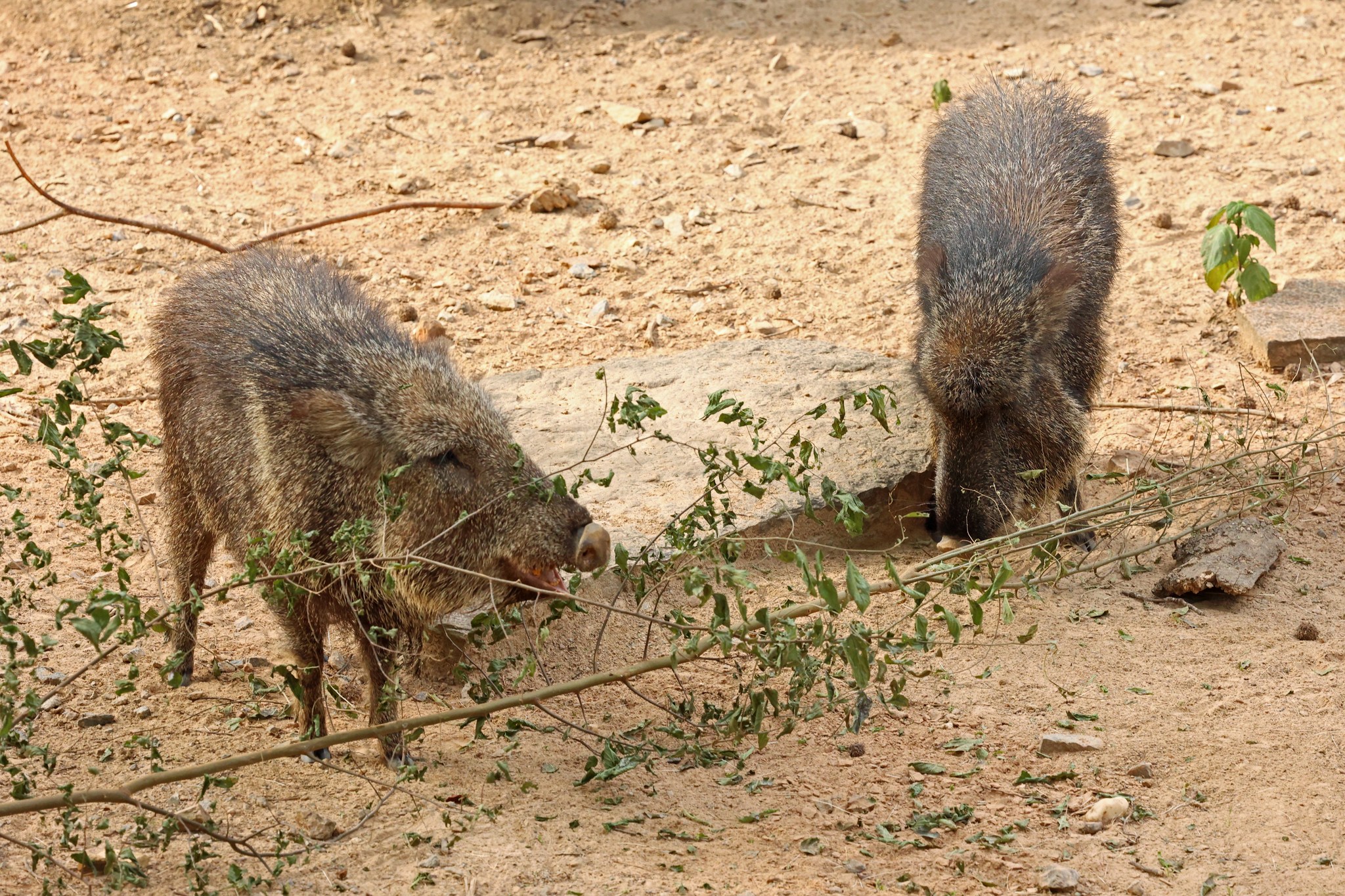Peccary
Unlike their diurnal counterparts who are active during the day, nocturnal primates are specially adapted to thrive in the darkness of night. These primates have unique features such as large eyes equipped with highly sensitive rods and cones, allowing them to see in low light conditions. They also possess keen senses of hearing and smell, which they rely on to navigate their nocturnal habitats and locate food sources.



ENDANGERED
Chacoan Peccary
The Catagonus wagneri, or Chacoan peccary, is the largest of the three recognized peccary species and is native to the dry Gran Chaco region of South America. Unlike other peccaries, it has a distinctive third hind toe and a complex nasal structure adapted for filtering the dusty environment of its habitat. These peccaries are social animals, typically living in herds of up to 10 individuals, and communicate through various vocalizations and scent marking.
A small herd of Chacoan peccaries calls the Little Rock Zoo home, residing in the grasslands area near the Cheetah Outpost. Recently, a male and female pair joined our two resident females, enriching the herd and supporting our conservation efforts. Learn more about the significance of this addition in our blog post: Meet the Peccaries: Unique Newcomers to the Little Rock Zoo
- Peccaries have a complex, disc-shaped nose that helps them navigate and dig for food in their dry, dusty environments.
- The Chacoan peccary is the only species of peccary with a distinct third hind toe.
- Peccaries live in herds and use various vocalizations, such as grunts and squeals, to communicate with one another.
- They have scent glands on their backs that they use for marking territory and communicating with their herd.
- Peccaries are often mistaken for pigs due to their similar appearance, but they are not the same. While both belong to the order Artiodactyla (even-toed ungulates), peccaries belong to the family Tayassuidae, whereas pigs are part of the family Suidae. Peccaries are native to the Americas, whereas true pigs originated in Eurasia and Africa. Despite their resemblance, they differ in physical traits, behavior, and genetic lineage.
The Chacoan peccary is considered endangered, primarily due to habitat loss, hunting, and human encroachment in its native Gran Chaco region of South America. Conservation efforts focus on habitat protection, anti-poaching measures, and breeding programs like the Species Survival Plan (SSP) to ensure genetic diversity and population stability. These initiatives are crucial for preserving this rare species and maintaining the ecological balance of their environment.
Photos by Karen Caster



